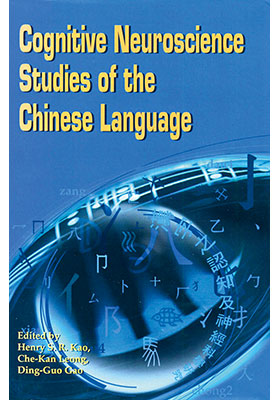Cognitive Neuroscience Studies of the Chinese Language
(漢語的認知神經科學研究)
ISBN : 978-962-209-568-7
July 2002
344 pages, 6″ x 9″
- HK$320.00
Ebooks
Also Available on
What are the linguistic constituents and structural components of Chinese characters and words? Does the spoken language provide a basis for reading different writing systems, including Chinese? How do the results of current neuroimaging and electrophysiological studies of processing Chinese converge with cognitive behavioural data? Are similar neurocognitive networks involved in reading alphabetic English and morphosyllabic Chinese? This volume brings together the related disciplines of neuroscience, cognitive psychology and psycholinguistics to explain some of the complex issues in understanding the processing of the Chinese language. Using current research findings and theories, chapters by leading researchers explore topics such as learning to read Chinese, word identification by readers of different skill and the development of Chinese vocabulary.
“Chinese and its Japanese kanji derivative are living writing systems in daily use by hundreds of millions of people, and thus deserve in their own right to be examined by the best available scientific methods. The approach taken in this volume brings the issues to a more general level with deep implications for our understanding of how the mind can meet the brain in complex cognitive functions. Cutting edge techniques in neuroimaging, electrophysiology, eye movement recordings, together with connectionist modelling and careful analyses of perceptual and orthographic features, are used to reveal and clarify the complex nature of the information processes involved in reading Chinese characters. It is indeed a fascinating story, where many prejudiced beliefs are challenged and new insights of critical relevance for current theories of reading are developed.” —Professor Ingvar Lundberg, Department of Psychology, Goteborg University, Sweden



